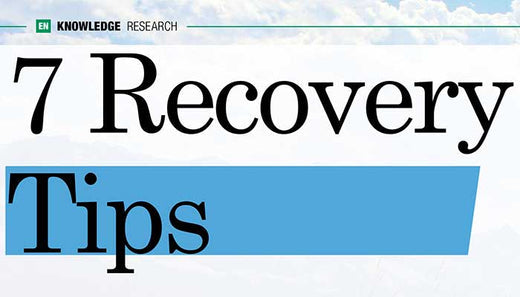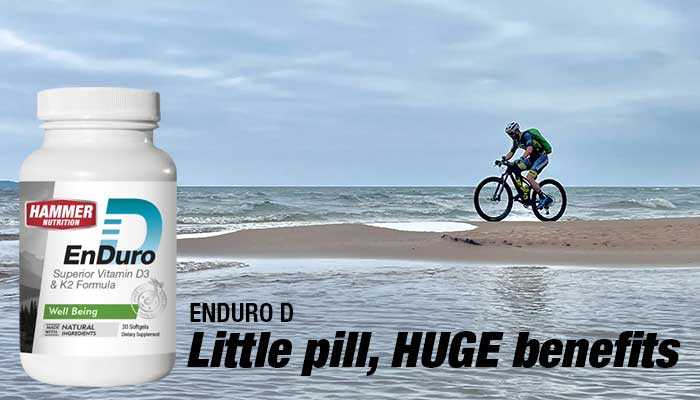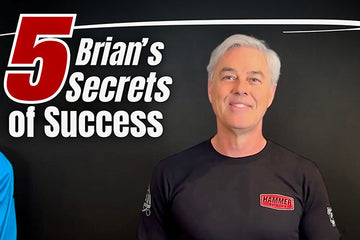Reducing global salt consumption to the recommended level could prevent
an estimated 2.5 million deaths annually
BY STEVE BORN
About two years ago, we wrote the article "Sodium—The Real Villain" included in Endurance News #121, where we discussed a study entitled “Sodium Intake and Target Organ Damage in Hypertension—An Update about the Role of a Real Villain.” [1] Here are but some of the “pulling no punches” comments from some of the researchers regarding this study:
- The vast majority of scientific evidence points out the importance of sodium restriction for decreasing cardiovascular risk.
- International Guidelines recommend significantly reducing sodium consumption to help lower blood pressure, organ damage, and cardiovascular risk.
- Evidence is against dissenting scientists because prospective, observational, and basic research studies indicate that sodium is the real villain: actual sodium consumption around the globe is far higher than the safe range.
- Sodium intake is directly related to increased blood pressure and independently to the enlargement of cardiac mass, with a possible independent role in inducing left ventricular hypertrophy. This correlation may represent the basis of myocardial ischemia, congestive heart failure, and cardiac mortality.
- Although debated, a high sodium intake may induce initial renal damage and progression in hypertensive and normotensive subjects.
- These factors point to the possible leading role of sodium intake in target organ damage and cardiovascular events, including mortality.
This and sizeable amounts of other research show that excess sodium is not good for you and that reducing sodium will protect against several negative health issues. Consequently, the World Health Organization (WHO) started a vigorous campaign to reduce the global population's salt intake by an average of 30% by 2025—thereby lowering sodium intake to about 2,000 mg a day per person (5,000 mg of salt), significantly less than the estimated 3,550 mg of sodium (9,000 mg of salt) currently consumed by the average American every day.
Of course, this 30% average reduction focuses on all aspects of sodium intake. However, the American Heart Association emphasizes sodium in processed and packaged food, which makes up nearly 75% of the U.S. daily sodium intake. [2]
On a bit of a tangent, I’ve often wondered what “the average American” is when research uses this verbiage. I found a site [3] that used a sample of 8,067 people and showed an average sodium intake for the following age group:
- Ages 2-5 --- Daily sodium intake average: 2,248 mg
- Ages 6-11 --- Daily sodium intake average: 2,992 mg
- Ages 12-19 --- Daily sodium intake average: 3,411 mg
- Ages 20-50 --- Daily sodium intake average: 3,754 mg
- Ages 51-70 --- Daily sodium intake average: 3,343 mg
- Ages 71+ --- Daily sodium intake average: 2,928 mg
Those are astronomical amounts—2-5-year-olds consuming over 2,200 mg of sodium a day?!?—and considering that this data is ten years old (with the amount of processed and packaged foods no doubt much higher since then), it's not a stretch to suggest that daily sodium intakes across the board have increased.
And even though the United States ranks 6th of all countries in the world in salt/sodium consumption, our current intake of 9,000 mg of salt daily is just below India, the #5 country at 9,100 mg of salt per day, and not too very far off from the #1 country, China, whose salt intake is approximately 10,900 mg per day. [4]
We need to do better! The world needs to do better! That's why the World Health Organization has made the following recommendations for salt reduction: [5]
- All adults, with or without high blood pressure (including pregnant and lactating women), should consume less than 5,000 mg (just under a teaspoon) of salt per day. Note: There are a handful of exceptions, one of which is for those who are taking drug therapy treatments that may lead to deficient sodium levels.
- The recommended maximum salt intake for adults “be adjusted downward for children aged two to 15 years old based on their energy requirements relative to those of adults.”
- All salt should be iodized or iodine-fortified, “which is essential for healthy brain development in the fetus and young child and optimizing people’s mental function in general.”
According to the World Health Organization: “Salt intake of fewer than 5 grams per day for adults helps to reduce blood pressure and risk of cardiovascular disease, stroke, and coronary heart attack. The principal benefit of lowering salt intake is a corresponding reduction in high blood pressure."
Additionally, as mentioned in the subtitle of this article, the World Health Organization estimates that 2.5 million deaths could be prevented each year if global salt consumption were reduced to the recommended level.
We’ve been trumpeting the benefits of a low-salt/low-sodium diet for 30+ years because, first and foremost, it is one of the most important steps we can take to help stave off disease and significantly increase the potential to live longer, healthier lives.
Secondly, a low-sodium diet improves athletic performance because it allows the body’s built-in mechanisms—which are there to recirculate and thus conserve our stores of sodium—to work optimally.
Company founder and owner Brian Frank has elaborated on both for over 30 years:
"Show me an athlete with salt crust on their skin and clothing, and I'll show you an athlete that consumes a high-sodium diet. The more you eat, the more you will excrete; it really is that simple. High sodium intake is not only contrary to optimal health, it contravenes normal body mechanisms that regulate sodium excretion and recirculation during exercise. This is why we have always advocated a low-sodium diet and moderate sodium intake during exercise."
There are many steps we can take; the American Heart Association’s "Tips to Lower Sodium In Your Diet"
Another significant step we can take to ensure better health and athletic performance is outlined in the article "Potassium: A Key to Longevity"
Enjoy superior athletic performance and help keep the grim reaper at bay! Lower your sodium intake, starting today!
REFERENCES:
[1] https://www.mdpi.com/1660-4601/17/8/2811/htm
[2] https://newsroom.heart.org/news/what-if-sodium-in-packaged-foods-was-reduced-for-an-entire-continent
[3] https://www.cdc.gov/mmwr/volumes/66/wr/mm6612a3.htm
[4] https://www.statista.com/statistics/1061321/global-consumption-of-salt-by-country/
[5] https://www.who.int/news-room/fact-sheets/detail/salt-reduction











3 comments
Yes, yes, yes! This is why I consume Hammer energy gels. Each pack averages only 25mg sodium. Other brands are so much higher and it really adds up during a marathon run or century ride when one consumes many packs of “energy gels”. I am thankful to Hammer for providing low sodium energy gels when the bulk of the market provides high sodium products. One of sodium’s original purposes was to preserve meat during trans-ocean ship voyages. Our culture became somewhat addicted to salt and look for a salty flavor to provide “taste”. Added salt is not necessary and ones tastes, over time, will become accustomed to the natural flavor of food without added salt and reduce the risks as stated above from over consumption of sodium. Thanks again, Hammer!
Brian,
Thank you so much for this valuable reminder. The two linked articles were especially helpful. I printed them out and I’m putting them on the fridge!
I am sadly addicted to sodium at the age of 71 after a lifetime of consuming salty foods. I’m on blood pressure medication, yet I still struggle to turn away from salt. Of course I LOVE Asian food. That number from China is horrifying.
Thank you so much for your commitment to vibrant health as well as athletic performance. Any additional tips to lower salt cravings are always appreciated.
Kathy
———
Hammer Nutrition replied:
Hi Kathy, thank you for your comment and candid admission. The truth is that sodium desensitizes our taste buds so that food tastes bland without it. One of the most surprising benefits of fasting (14 days with the Master Cleanse or Mean Green fast – another article for future ENW), not daily IF, was how my taste buds began working again. Steamed broccoli with no seasoning was like a flavor explosion in my mouth. A simpler way, as David pointed out in his earlier comment, if one gradually reduces their sodium intake, taste buds will also recover their sensitivity. Like sugar, I suggest finding the salty food you enjoy the most, put that on a pedestal and have as a special, somewhat rare treat, while simultaneously removing the “hidden” sodium sources from your diet – back to packaged, processed and restaurant food. BDF
I made a critical error two years ago using your company’s gels . I switched from another brand not realizing the sodium content wa not the same as the other product I was taking . I spent over an hour cramped up at a feed station at the tour of Batenkill . Since then I really pay attention to my salt intake and take a salt tablet every hour even on my indoor trainer . As long as I keep up with one per hour I don’t cramp . The studies you are citing are non athletes who are eating fast food and garbage so they don’t really relate to someone who eats a healthy diet of unprocessed foods . I’ll go as far to say that I have added a little salt to my regular diet in that I was basically eating a very low amount . Like anything over doing can be detrimental to health .
———
Hammer Nutrition replied:
Hi David, Thank you for your comment. Not eating this type of food does not guarantee a low sodium diet. Habitual high sodium intake is bad for ones health and level of activity does not change that fact. Heart disease, in all forms, is directly linked to high sodium intake, whether one is active or not. The American Heart Association recommend daily maximum sodium intake around 2,300, with a goal of 1,500. The number is only a bit higher for athletes. These levels of daily sodium intake can only be achieved by severely limiting consumption of the types of food mentioned in this article and added salt to whole foods eaten. In addition to protecting against heart disease and If one wants to improve their heat stress tolerance and avoid the fun of electrolyte imbalance like cramping, this is the path forward. If a person chooses to eat a high sodium diet instead, be prepared to have to consume copious amounts during. It a choice we all have to make for ourselves. BDF